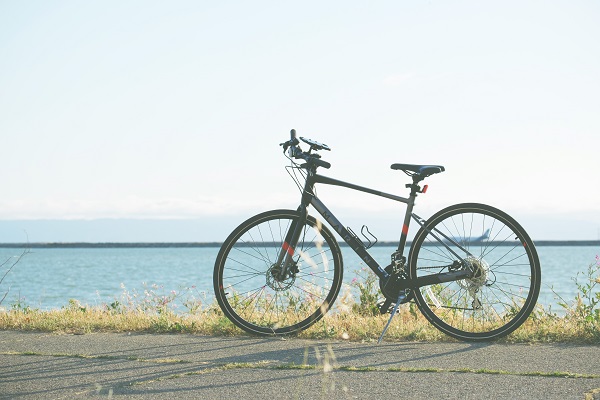**This is a collaborative post**
Summer in the UK presents the perfect opportunity for athletes to train outdoors and refine their cycling performance. Coastal paths and dedicated bike lanes offer open space, scenic views, and a range of terrain that supports progress. The mix of stable temperatures, fresh sea air, and varied conditions makes these locations a strong fit for structured triathlon preparation. With the right setup and a smart approach to route planning, riders can improve their form, technique, and endurance over the summer months.
Coastal Terrain and Triathlon Bike Performance
Seaside paths allow athletes to maximise the features of their triathlon bike. These bikes are designed for aerodynamic efficiency and ideal for straight-line riding on smooth coastal surfaces. Flat stretches provide the perfect setting for focusing on form and cadence, while occasional inclines challenge power output and posture.
Riders looking to upgrade their gear can find your ideal triathlon bike by testing how different designs perform under real conditions. This environment helps athletes evaluate comfort, handling, and speed while identifying what suits their riding style.
Practising on the coast allows triathletes to simulate race conditions, especially during swim-to-bike transitions. Many coastal locations offer proximity between the shoreline and cycling paths, creating a realistic transition zone for race preparation.
Advantages of Beachside Cycling Routes
Coastal training offers a variety of conditions that prepare athletes for diverse race courses. Morning rides feature lighter winds and cooler temperatures, which are ideal for speed sessions. Afternoon outings are better suited to building strength and resilience, especially when headwinds develop.
The best triathlon bikes handle varied gradients and surfaces well, so alternating between flat and hilly sections improves control and confidence. Changing elevation and exposure to sidewinds forces riders to adjust their approach and posture, skills that prove valuable during unpredictable race days.
Access to beachside car parks and open spaces also makes it easier to practise transitions. Simple setup changes, such as laying out shoes and helmets beside natural markers can reinforce muscle memory and cut down transition times on race day.
Top Routes in Southern England
The Brighton to Eastbourne trail is a well-maintained 27-mile route with tarmac paths favouring triathlon-specific geometry. With long, uninterrupted sections and moderate gradients, this route allows sustained effort while enjoying coastal views.
Another strong option is the Bournemouth to Swanage loop, which adds inland climbs and technical turns to its profile. This 35-mile circuit includes elevation changes that train strength and handling, ideal for more advanced sessions.
Suffolk’s stretch from Aldeburgh to Southwold covers around 20 miles of flat terrain. Light traffic and reliable surfaces make it a top choice for focused efforts, time trials, or interval work.
Each of these routes also provides space for practising transitions. Areas like Hove Lawns or Beach Road in Bournemouth offer room to rehearse swim-to-bike changes with minimal interruptions.
Southern Coast Training Benefits
The south coast features a combination of climbs and flat paths that support balanced training. Gentle inclines like those near Brighton Marina help develop endurance, while shorter steep hills near Beachy Head build explosive strength.
Wind direction changes during the day offer another layer of challenge. Riders often experience tailwinds in the morning, perfect for speed drills, and stronger headwinds later, useful for resistance training. This variety encourages consistent performance across different scenarios.
For best results, build gradually. Start with short, technique-focused sessions and move towards full-route efforts with added pace work. A structured approach helps athletes develop endurance without risking fatigue or injury.
Northern UK Routes for Focused Training
The Northumberland Coast route from Berwick-upon-Tweed to Alnmouth offers smooth terrain and long, straight sections. These conditions support sustained aerodynamic positioning and consistent cadence, which are key aspects of triathlon bike performance.
In Yorkshire, the Scarborough to Whitby route is more demanding, with frequent climbs and sharp descents. This 21-mile stretch is ideal for building hill confidence and testing braking control, especially on recently resurfaced roads.
Cumbria’s route between Maryport and Allonby for quieter training covers 10 miles of peaceful coastal riding. Early morning rides reduce interruptions and allow uninterrupted transitions or pace efforts.
Northern routes demand extra preparation. With fewer service stops, it is essential to carry hydration, snacks, and repair tools. Weather can change quickly, so lightweight layers and careful planning are essential.
Coastal Bike Care Tips
Sea air and sand can quickly damage components if bikes are not properly cared for. Apply marine-grade grease to exposed metal parts and use water-resistant lubricant on the chain before each ride. A post-ride rinse with fresh water removes residue and prevents corrosion.
Regular cleaning and inspection help avoid mechanical issues. If the bike begins to squeak or gears become sluggish, it is a sign that salt or sand affects performance. Maintenance routines are key to keeping your triathlon bike reliable through the season.
Make the Coast Work for You
UK coastal routes offer a rich mix of training opportunities. Whether you are building endurance on flat terrain or practising transitions beside the sea, these locations help prepare for every phase of a triathlon. With careful planning, the right equipment, and attention to bike care, coastal rides can form the foundation of a successful race season. Every session by the sea is a step closer to peak performance.
